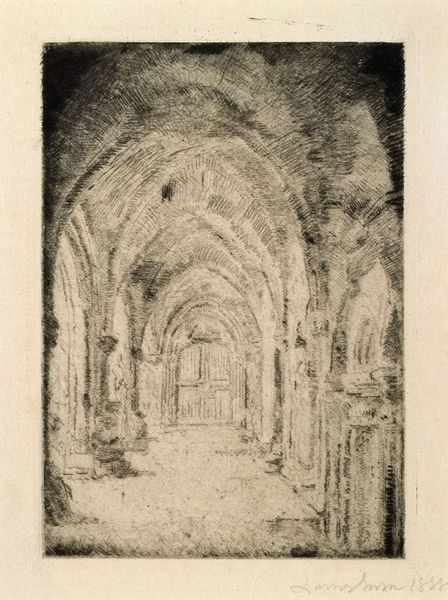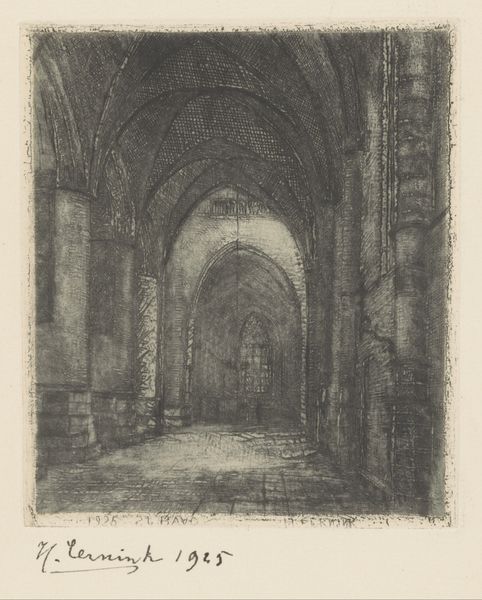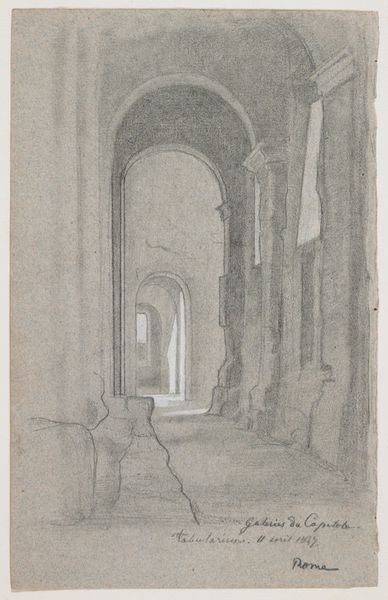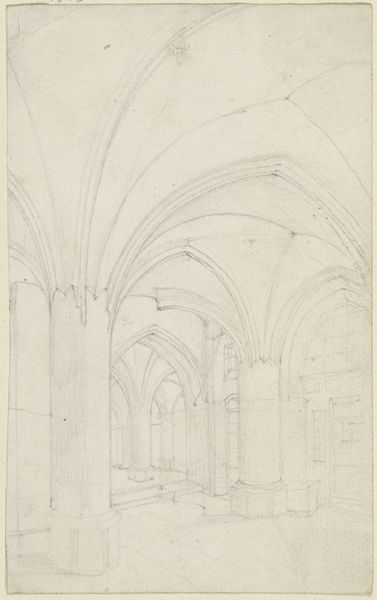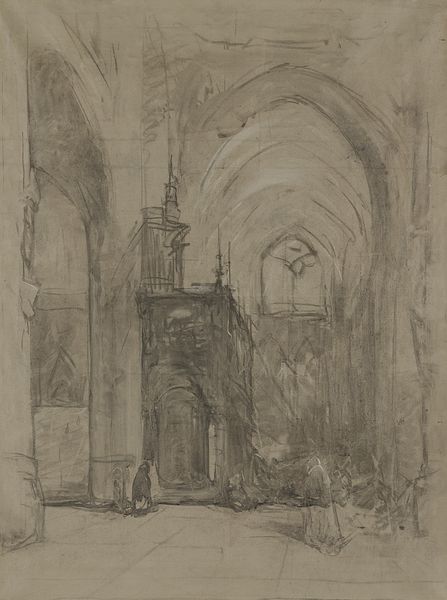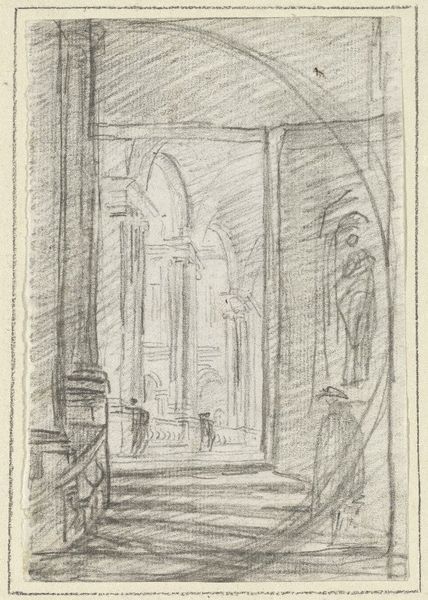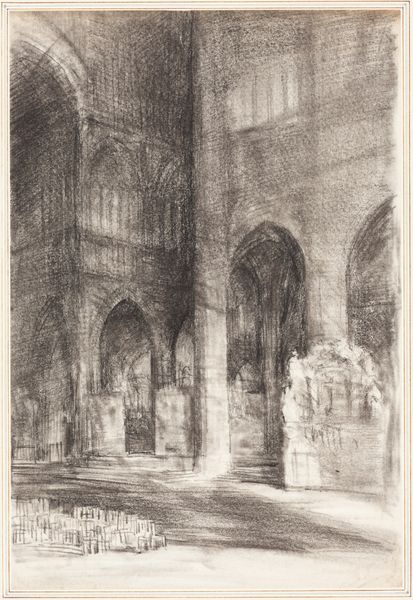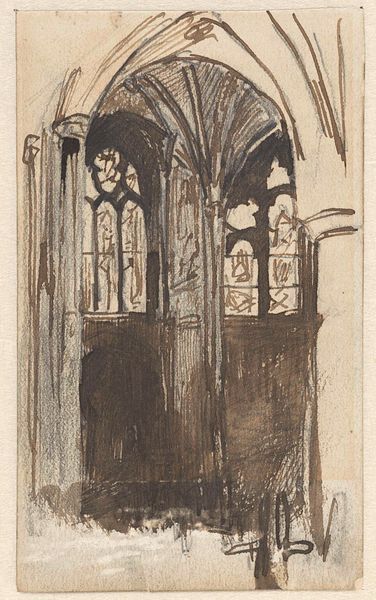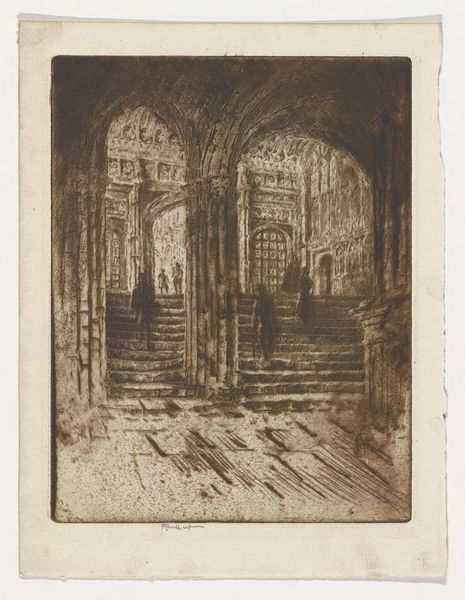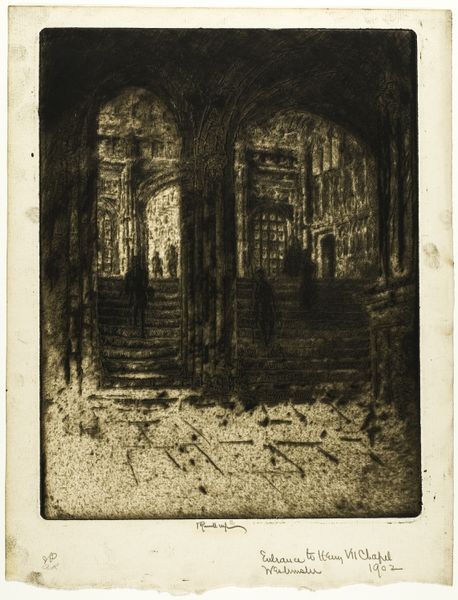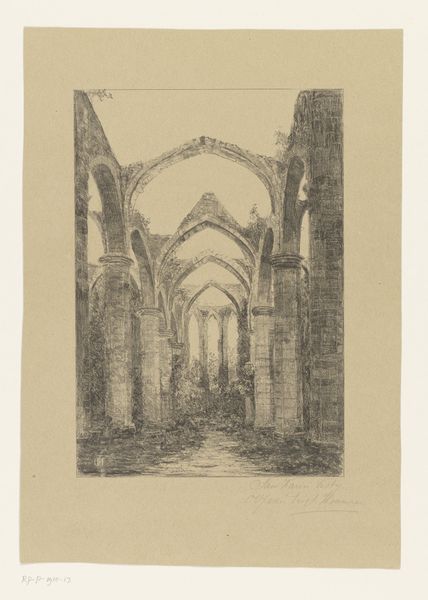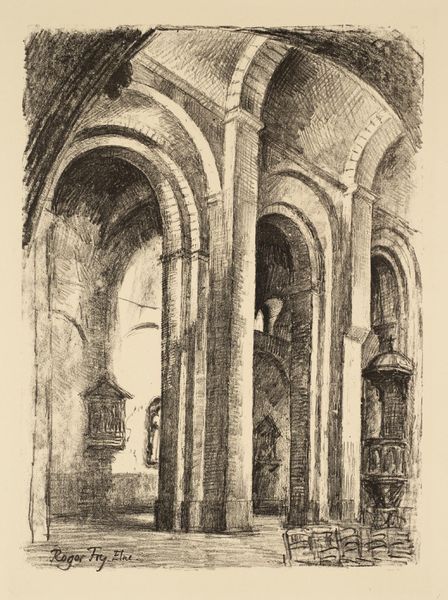
drawing, print, etching
#
drawing
#
medieval
# print
#
etching
#
landscape
#
perspective
#
form
#
line
#
symbolism
Copyright: Public Domain: Artvee
James Ensor etched this plate of a crypt sometime in the late 19th or early 20th century. The architecture is rendered through a dense web of hatched lines, a common printing technique at the time. Ensor lived and worked in Belgium, a country with a strong Catholic history, and his choice of subject might seem to signal conservative values, the church representing traditional authority. But Ensor was a provocateur, and his art frequently challenged social norms. Looking closely at the architectural features in this image, we can see an exaggeration of the visual codes of religious spaces. The arches of the crypt become exaggerated, almost cartoonish. To truly understand Ensor’s position, we can look at his other works, researching Belgian history to understand the place of Catholicism in Belgian society at the turn of the century, and examining the institutional frameworks that shaped Ensor’s artistic production. Approaching the art in this way, we can see it not as a straightforward representation, but as a complex, layered statement.
Comments
No comments
Be the first to comment and join the conversation on the ultimate creative platform.
